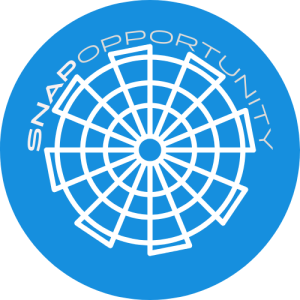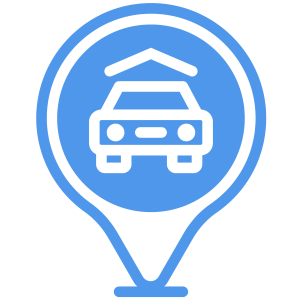Tableau adds generative AI tools, tightens Databricks bond – TechTarget
Tableau on Tuesday introduced new capabilities for its generative AI tools, including assisted data transformation capabilities and a feature that enables customers to explore metrics using natural language.
The vendor unveiled the new capabilities during Tableau Conference, its annual user conference in San Diego.
Pule and Einstein Copilot for Tableau make up Tableau’s current generative AI offerings.
Pulse, which the vendor made generally available in February, is an insight generator that automatically surfaces and delivers insights to users in natural language. Einstein Copilot for Tableau, which is in beta testing and planned for wider release this summer, is an AI assistant that enables customers to explore data using natural language, recommends questions and guides users through the complex process of calculating KPIs and metrics.
The AI-assisted data transformation tool is part of Einstein Copilot for Tableau platform and slated for GA along with the tool itself this summer. Pulse Q&A, which lets customers explore metrics in natural language, is part of Pulse and is now GA.
As Tableau builds out its generative AI capabilities, its pace of innovation is effectively in line with what competitors are delivering, according to Doug Henschen, an analyst at Constellation Research.
Some vendors such as MicroStrategy and Domo have made more features GA while others still have most — if not all — in preview. Many potential users, however, remain wary of generative AI given its propensity to deliver inaccurate responses that can lead to financial and reputational harm. As a result, whether tools are available or not, adoption is still in its nascent stage.
“Einstein Copilot for Tableau is … lagging behind some of the GA announcements from [other vendors],” Henschen said. “[But] most customers I talk to are being conservative about GenAI. … I think companies will want to make sure they’re satisfied with veracity, data privacy and security provisions before they move into wide deployments of GenAI-based features.”
In addition to new generative AI features, Tableau unveiled an expanded partnership with Databricks and new capabilities in Tableau Public, a free environment in the vendor’s platform where users can share their work.
New capabilities
As Tableau develops generative AI capabilities, the vendor is now amid what CEO Ryan Aytay calls the third wave of analytics.
The first wave was full-service BI with data the sole domain of trained experts. The second was self-service BI with data accessible to self-service users with data literacy training. The third wave is about personalization with vendors able to create analytics experiences tailored to each user with AI.
“The future of Tableau is all about delivering the analyst with deep visualizations, data cataloguing and data preparation. But it’s also about bringing data and AI for every user,” Aytay said. “We’re doing both of these things as we move ahead.”
With data and AI for every user in mind, Tableau Pulse now includes Pulse Q&A. The feature enables customers to ask questions of their business metrics in natural language, which the feature will respond to with insights for that specific metric.
In addition, among the new Pulse features is Metrics Bootstrapping. The feature allows users to save calculations to Tableau’s metrics layer so they can track and monitor metrics over time as well as prompts Pulse to push insights to users based on those metrics. Pulse also now includes Metric Goals, which lets customers compare progress on a goal against a target.
Pulse has already been adopted by 5,000 customers, according to Tableau.
Its capabilities, meanwhile, further Tableau’s goal of making analytics available to everyone who can benefit from data within an organization, according to Henschen.
“Pulse stands out in that it is really a new and democratizing form of BI,” he said. “It’s an easier-to-use, to-the-point interface that’s tied to curated metrics that are understood to be important to business users.”
Similar to Pulse, new features included in Einstein Copilot for Tableau are aimed at serving every user with data and include AI-assisted data transformation and the use of Einstein Copilot with Tableau Catalog.
AI assisted data transformation enables customers to automate data transformation pipelines by providing step-by-step suggestions. Using Einstein Copilot with Tableau Catalog, users can automatically create descriptions of their data so data is later easier to find and explore.
The features are beneficial, according to Henschen. But because they won’t be GA for at least a few more months, they’re not as immediately significant as those now part of Pulse, which is now being used by thousands of customers, he noted.
“Einstein Copilot is important and promising,” Henschen said. “But it’s still in beta at this point, so it’s less important than Pulse.”
In addition to adding generative capabilities of its own, Tableau unveiled an expanded partnership with Databricks, which has aggressively built an environment for generative AI model and application development over the past year.
The partnership now includes Tableau Delta Sharing and Explore in Tableau, both of which aim to help users of Tableau and Databricks speed the time it takes to discover insights and make data-informed decisions, according to Elizabeth Maxson Martinet, Tableau’s chief marketing officer.
Tableau Delta Sharing is a connector that enables joint users to share data between the Tableau and Databricks environments to eliminate the need to replicate data, improve governance with centralized access managements and foster collaboration both within organizations and with external partners. Explore in Tableau, meanwhile, enables joint customers to connect to real-time data sources without leaving their Tableau environment.
“[The expanded partnership] is going to help streamline data exploration and analysis in real-time,” Maxson said.
Henschen, meanwhile, noted that given Databricks’ development of an environment for traditional AI, generative AI and machine learning over the past year, a close relationship between Tableau and Databricks is a plus customers of the two vendors.
Over the past 10 months, Databricks acquired MosaicML for $1.3 billion, made three more acquisitions to add AI development capabilities, partnered with generative AI developer Mistral AI, developed and launched two large language models and debuted a suite of tools to aid AI development.
“Databricks is at the head of the pack of independent analytical data platforms promoting AI, ML and GenAI as well as BI,” Henschen said. “It’s good to see closer integration with Databricks”
Beyond generative AI, Tableau updated its platform to include an updated version of Tableau Public that now enables more than just sharing of visualizations.
First launched in 2010 to provide users with a community environment to share their work, over time users have wanted to be able to do more with Tableau Public, according to Aytay. Specifically, they’ve wanted a personal environment within Tableau Public where they can securely save and work with data without sharing their work with the rest of the Tableau community.
Tableau now enables local file saving within Public to provide users with what Aytay called a personal edition of Tableau.
“This has been a big ask from our community,” he said. “They now have a sandbox environment so they can look at private or personal data.”
Plans
While the new features in Pulse are GA, more new capabilities in the generative AI tool as well as those planned for Einstein Copilot for Tableau feature prominently on Tableau’s roadmap.
The vendor is adding five new features to Pulse each week, according to Maxson.
Henschen, meanwhile, said Tableau would be wise to offer pricing options beyond the traditional per-user/per-month structure. The vendor has introduced consumption-based pricing for Tableau Embedded, but similar pricing for other tools could help broaden Tableau’s adoption within organizations, he said.
The use of analytics tools has long been stuck at about a quarter of all employees within organizations, largely due to the complexity of BI platforms. Pricing, however, can also hinder more widespread adoption and steps vendors such as Tableau can take to improve pricing models could help expand analytics use.
“If we’re going to get beyond the 25% adoption levels that have long hampered typical BI deployments, we have to move to access models that are easier to manage and subscription models that are more affordable,” Henschen said. “Pulse would make a lot of sense as a stand-alone offering, for example, rather than being tied to current subscriptions.”
Eric Avidon is a senior news writer for TechTarget Editorial and a journalist with more than 25 years of experience. He covers analytics and data management.













